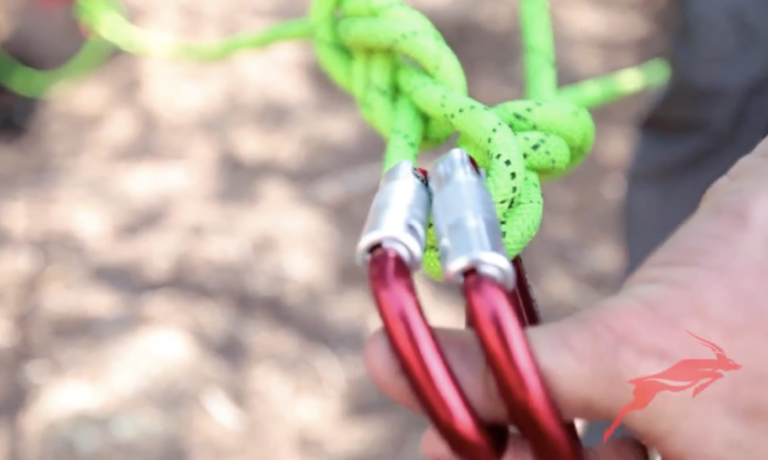Selecting Anchors for Rope Rescue Rigging
Anchors are the backbone of every rescue system, providing the stability and security needed to ensure a safe and effective operation. Whether you’re preparing for a high-angle rescue, a confined space operation, or a swiftwater scenario, selecting and rigging the right anchor is crucial. This guide provides an in-depth look at the key considerations, anchor types, and practical techniques to enhance your rescue operations solid “selecting anchors for rope rescue rigging”.
Key Factors in Anchor Selection
Choosing an anchor goes beyond picking the strongest available point. It requires a combination of judgment, experience, and situational awareness. Here’s what to evaluate:
Location
- Determine the desired path of the load to avoid unnecessary redirects.
- Consider proximity to the edge and ensure sufficient workspace for haul systems and attendant operations.
Strength
- Analyze the anticipated forces, including shock loads, and choose an anchor that exceeds these requirements.
- Ensure the material of the anchor point—be it steel, wood, or rock—can withstand the load without deformation or failure.
Time
- Time constraints often necessitate quick decisions. Choose systems that balance safety and simplicity, enabling swift action while maintaining reliability.
Selection Criteria
- Anchors should be “suitable” for the situation, which may involve unconventional choices under challenging conditions. Always prioritize function and safety over convenience.
Types of Anchors and Their Applications
The selection of an anchor often depends on environmental factors, available resources, and the type of rescue operation.
Working Line Anchors
- Provide ample room for haul field operations and may include edge-set directionals to manage the fall line.
- Ideal for mainline setups where space and alignment are crucial.
Belay Anchors
- Typically positioned to align with the mainline’s fall line or near the edge for optimal rope management.
- Must offer redundancy and reliability, especially in dual-rope systems.
Bombproof Anchors
- Include structural elements like I-beams, towers, or large, immovable natural features like boulders or rooted trees.
- Require no backups due to their inherent strength, but their stability must still be verified under field conditions.
Questionable Anchors
- Reliable under controlled conditions but not foolproof.
- Always pair with a backup anchor to mitigate the risk of failure.
Marginal Anchors
- Used only when no better options exist.
- Multiple marginal points must be combined into a redundant system to achieve adequate strength.
Practical Considerations in Anchor Rigging
Beyond selecting a suitable anchor, proper rigging ensures system stability and operational efficiency.
Focal Points
- The focal point serves as the hub where all rigging components converge. It must be strategically located to optimize rope alignment and manage forces efficiently.
- Floating focal points are often used in dynamic systems to maintain balance during shifts in load direction.
Redundancy
- Incorporate backups into your anchor systems whenever possible. Even the strongest anchors can fail under unforeseen circumstances.
Directionals and Deviations
- Use directionals (e.g., pulleys, carabiners) to adjust the rope’s natural line, ensuring a clear path and reducing friction.
- Deviations help navigate obstacles without subjecting ropes to excessive wear or forces.
Edge Protection
- Protect ropes from sharp edges using padding or edge rollers. This simple measure prevents damage and prolongs rope life.
Advanced Techniques and Scenarios
As rescue scenarios become more complex, understanding advanced rigging techniques can make all the difference.
Staggered Focal Points
- Historically, staggered focal points were favored, but placing focal points side by side improves communication between rope operators and simplifies system monitoring.
Artificial High Directionals (AHDs)
- AHDs like tripods or gin poles are invaluable in overcoming edge transitions and creating efficient rope angles.
- They often double as anchor points and provide elevation for cleaner rope management.
Dynamic Systems
- Systems like load-sharing anchors are used in unpredictable conditions where forces may shift dynamically. These require meticulous planning and constant monitoring.

ERNEST Framework: Evaluating Anchor Systems
Use the ERNEST framework to analyze your anchor system’s integrity:
- E – Equalized: Distribute forces evenly across multiple anchor points to minimize strain.
- R – Redundant: Ensure that failure of one anchor does not compromise the entire system.
- NE – Non-Extending: Avoid significant movement or force spikes if an anchor point fails.
- S – Solid: Select the strongest anchor points available.
- T – Timely: Build systems that can be rigged quickly without sacrificing safety.



Locating Anchor Focal Points
During the initial size-up of a rescue incident, determine the focal point locations for both rope systems (mainline and belay line or a mirrored rope system). Using mental projection to predict how ropes lines will run when they are set up will assist in avoiding a rigging nightmare. Take a moment to carefully strategize at the outset, which will pay off in the long run in not having to de-rig later because of a poor selection. The focal points should be situated far enough from the edge to allow for the construction of a haul system (if required), which does not place the haul team inside the hazard zone. A constricted location at the top of a cliff can be employed with the use of a change of direction that still permits the focal points to have some distance from the edge. Ultimately, both focal points need to be situated outside the hazard zone.
It was previously considered suitable to stagger the focal point locations back from the edge. However, it now recognized that there are more advantages to having the focal points of both ropes side by side. Communication between the two rope systems is far better, and each rope operator can more easily monitor what the other rope system is doing. On-the-job detection and correction of the technique are far better.

The Importance of Anchor System Integrity
Even the most robust rescue systems are only as reliable as their anchors. A poorly chosen or inadequately rigged anchor can jeopardize the entire operation. By following best practices, applying the ERNEST framework, and leveraging experience, rescuers can create systems that inspire confidence and ensure success.
Rigging Lab Academy Resources
For further insights, training, and access to comprehensive courses on anchor selection, artificial high directionals, and rescue rigging, visit the Rigging Lab Academy Anchors Course.
Elevate your team’s rigging expertise and enhance operational safety with proven methods and expert guidance.
Peace on your Days
Lance












8 thoughts on “Selecting Anchors for Rope Rescue Rigging”
stromectol price in india Aquafish Cephalexin
Buy Fish Amoxicillin where can i buy stromectol ivermectin
Treatment Vitiligo is difficult to treat. stromectol online buy
Dapoxetine En Australie stromectol canada
Viagra Dosis Precio buy ivermectin tablets Viagra Indicaciones
Active against tubercle bacilli residing in macrophages May cause hyperuricemia resulting in a gouty attack Potentially hepatotoxic d. stromectol msd Cialis O Viagra Dove Comprare
Propecia Colchones stromectol for sale Buy Cheap Amoxil Without Prescription
unifiram (developmental code name dm-232) is an experimental drug. that has antiamnesic and other effects in animal studies with far greater potency than piracetam. a number of related compounds are known, such as sunifiram (dm-235) and sapunifiram (mn-19). unifiram has two enantiomers, with the dextro form being the more active isomer. it has been shown to reduce the duration of hypnosis induced by pentobarbital, without impairing motor coordination. as of 2015, no formal human studies with unifiram have been conducted. unifiram is not patented and, despite the lack of human and long-term toxicity studies, it is commonly sold online.
Comments are closed.